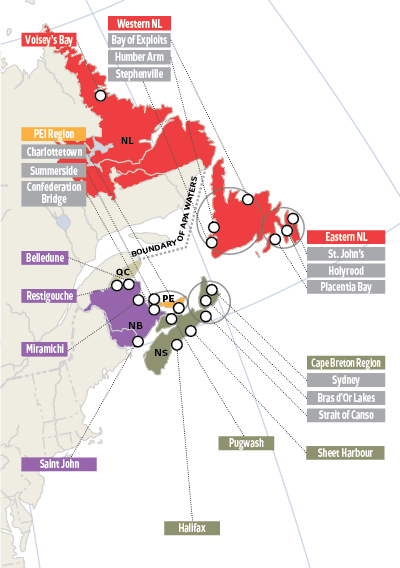Compulsory Areas
 The Pilotage Act has defined the Atlantic Pilotage Authority’s area of operation as all the Canadian waters in and around the provinces of New Brunswick, Prince Edward Island, Nova Scotia, and Newfoundland and Labrador. Within this region, the Authority has 20 designated compulsory pilotage areas. These areas are indicated on the map located on this page.
The Pilotage Act has defined the Atlantic Pilotage Authority’s area of operation as all the Canadian waters in and around the provinces of New Brunswick, Prince Edward Island, Nova Scotia, and Newfoundland and Labrador. Within this region, the Authority has 20 designated compulsory pilotage areas. These areas are indicated on the map located on this page.
How does the APA determine if a port is subject to compulsory pilotage?
The Authority continues to monitor and assess all areas within its mandate to determine any change in factors and circumstances that may have an impact on safety. If such a change is determined to warrant closer review, the Authority will employ an outside facilitator to conduct a Pilotage Risk Management Methodology (PRMM). The PRMM, developed jointly by the pilotage authorities and Transport Canada, uses a proven risk management methodology to assess the circumstances in the area. The PRMM has been used in an effective manner by the Authority on several occasions in the past to determine inherent risks in changing conditions.
The areas of risk examined for determining which ports should become compulsory are:
- degree of difficulty and hazard in the approaches and within the port itself;
- amount of vessel movement and maneuverability and the size of those vessels;
- design of wharves, slips, and actual space available for maneuvering;
- nature of cargo carried on board, e.g. oil, gas, explosives, hazardous materials;
- environmental concern and the preservation of the ecosystem.
